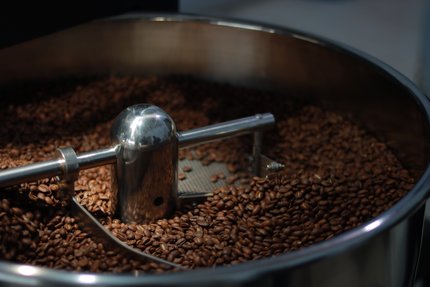Processing
Coffee processing is the process of removing the fruit pulp and seed parchment (paper-like skin protecting the coffee bean) so that they can be roasted. There are two main types of coffee processing: dry processing and wet processing.
In dry processing, the coffee cherries are spread out in the sun to dry. The drying process can take several weeks and requires careful monitoring to ensure that the cherries dry evenly. Once the cherries are dry, the parchment and mucilage (the inner layer of the pulp) are removed using a machine called a huller.
In wet processing, the coffee cherries are pulped to remove the outer skin. The coffee beans are then fermented to remove the mucilage. The fermentation process can take anywhere from 12 to 48 hours, depending on the desired flavour profile. Once the fermentation process is complete, the coffee beans are washed and dried.
Roasting
Coffee roasting is the process of heating raw coffee beans to develop their flavour and aroma. Roasting is a complex process that involves careful monitoring of the temperature and time.
The roasting process begins with the loading of the raw coffee beans into a coffee roaster. The coffee roaster is a large drum that heats the coffee beans evenly. The temperature of the coffee roaster is carefully controlled, and the beans are roasted for a specific amount of time, depending on the desired degree of roast.
The coffee roaster must carefully monitor the roasting process to ensure that the beans are roasted to the desired degree. The degree of roast is typically determined by the bean's colour. Lighter roasts are more acidic and have a brighter flavour, while darker roasts are more mellow and have a fuller body.
Impact on Flavour
The roasting and processing methods used on coffee beans have a significant impact on their flavour. For example, dry processed coffees are typically more full-bodied and earthy, while wet processed coffees are typically more clean and crisp.
The degree of roast also affects the flavour of coffee. Lighter roasts are more acidic and have a brighter flavour, while darker roasts are more mellow and have a fuller body.
